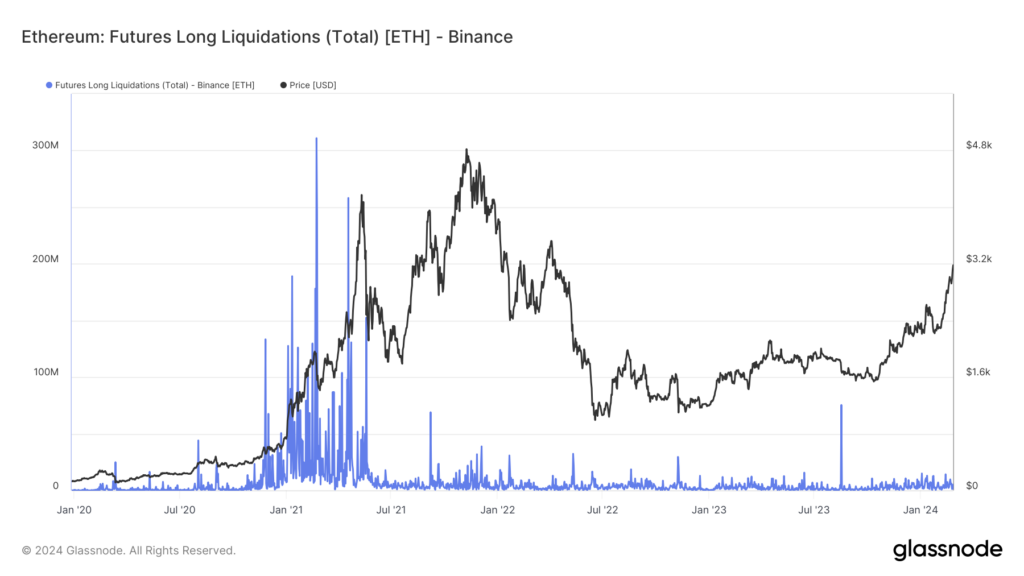NOIDA (CoinChapter.com) — Ethereum, like many cryptocurrencies, has experienced significant volatility and periods of rapid price changes, leading to market phenomena such as “long squeezes,” where long liquidations can lead to bearish market conditions.
In detail, a long squeeze occurs when the price of an asset falls rapidly, forcing traders who have taken long positions (betting that the price will go up) to sell off their positions to avoid further losses. The resulting selling pressure can lead to a further decline in the asset’s price.
Ethereum Long Liquidations History
The history of Ethereum’s long squeezes is visible during specific periods when the cryptocurrency market, in general, faced high volatility and downward price pressure.
While Ethereum’s history is marked by dramatic increases in value and sharp declines, long squeezes are particularly notable during the bear market phases or when unexpected events trigger rapid sell-offs.
Some key events include:
Firstly, after reaching an all-time high in January 2018, Ethereum and the broader cryptocurrency market faced a significant downturn. The crash followed a massive bull run in 2017, leading to highly inflated asset prices across the cryptocurrency market.
This period saw a substantial long squeeze as investors rushed to liquidate their positions amidst falling prices. Furthermore, the market sentiment shifted from extreme greed to fear, exacerbating the sell-off. While liquidation data is not available for the period, ETH prices dropped nearly 50% during the period.
Secondly, came the March 2020 Market Crash, which resulted from the COVID-19 pandemic. The pandemic caused a global market sell-off, including cryptocurrencies.
Ethereum’s price plunged along with the broader market, resulting in a long squeeze as traders liquidated leveraged positions worth nearly 40 million ETH tokens when each Ether was worth roughly $200.

Afterward, Ethereum saw a strong recovery in 2020, driven by the rise of decentralized finance (DeFi). However, the period also brought significant volatility. Rapid price movements led to long squeezes, the most significant in Aug. 2020, which saw long liquidations of over 44 million ETH.
Additionally, throughout 2021, Ethereum experienced significant growth, reaching new all-time highs. However, this growth was not without its corrections. Periods of rapid price decline during the year witnessed long squeezes, particularly as the market adjusted after hitting peak prices.
Thirdly, in 2024, the Jan. 3 flash market crash resulted in ETH long liquidation worth nearly $100 million in a single day.
As such, the ongoing ETH rally risks a reversal should the token’s price fluctuations trigger liquidations.
ETH Whales Exiting Market
Meanwhile, ETH whale addresses are plummeting, suggesting market participants likely anticipate a price reversal soon.

Ethereum wallets with 1,000 to 10,000 ETH (blue wave) plummeted despite the recent rally in ETH prices. Though the number of wallets holding more than 10,000 ETH tokens (red wave) showed a spike recently, the rise in the whale addresses could likely result from institutional interest.
Retail investors could likely follow suit, resulting in a spike in selling pressure and a price drop. With ETH open interest near $11.4 billion, assuming even half of it belongs to long positions could mean Ethereum could see long liquidations to the tune of $5.5 billion.
The post ETH Long Liquidation Risks: The Only Reason You Shouldn’t Buy Ethereum Today appeared first on CoinChapter.







